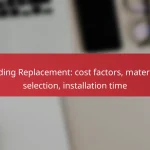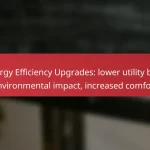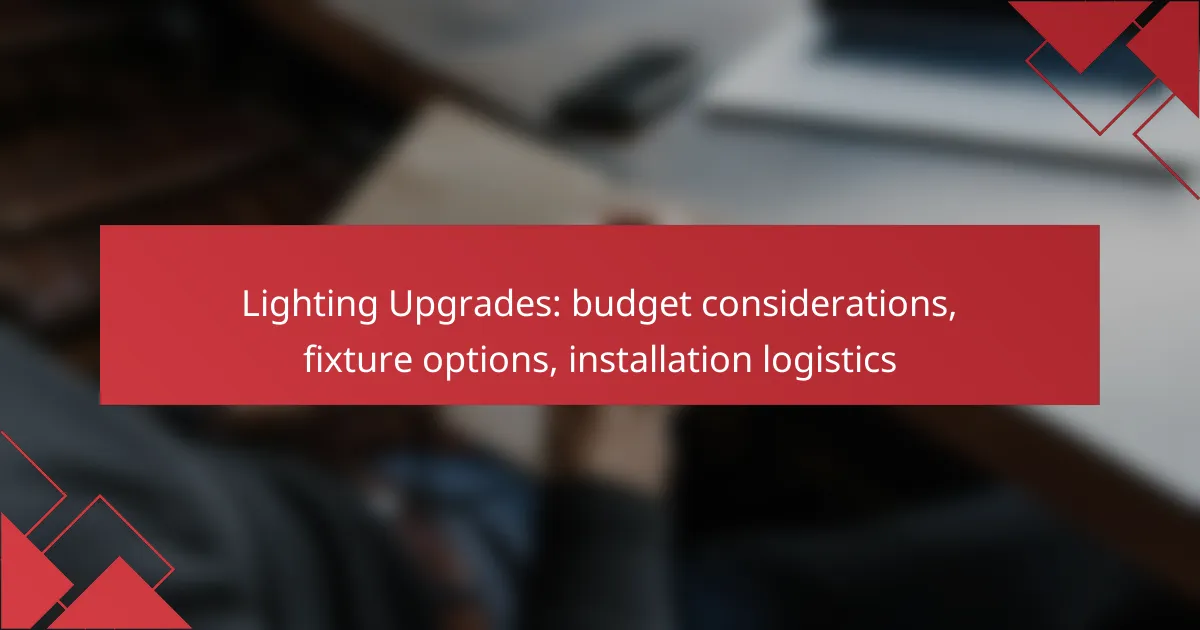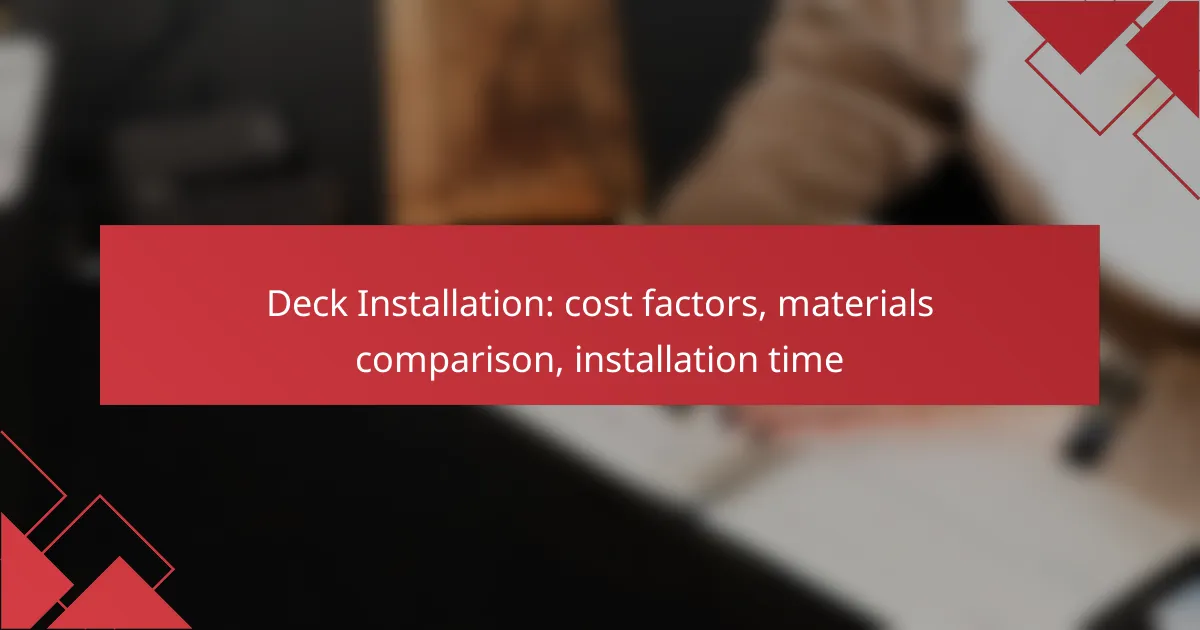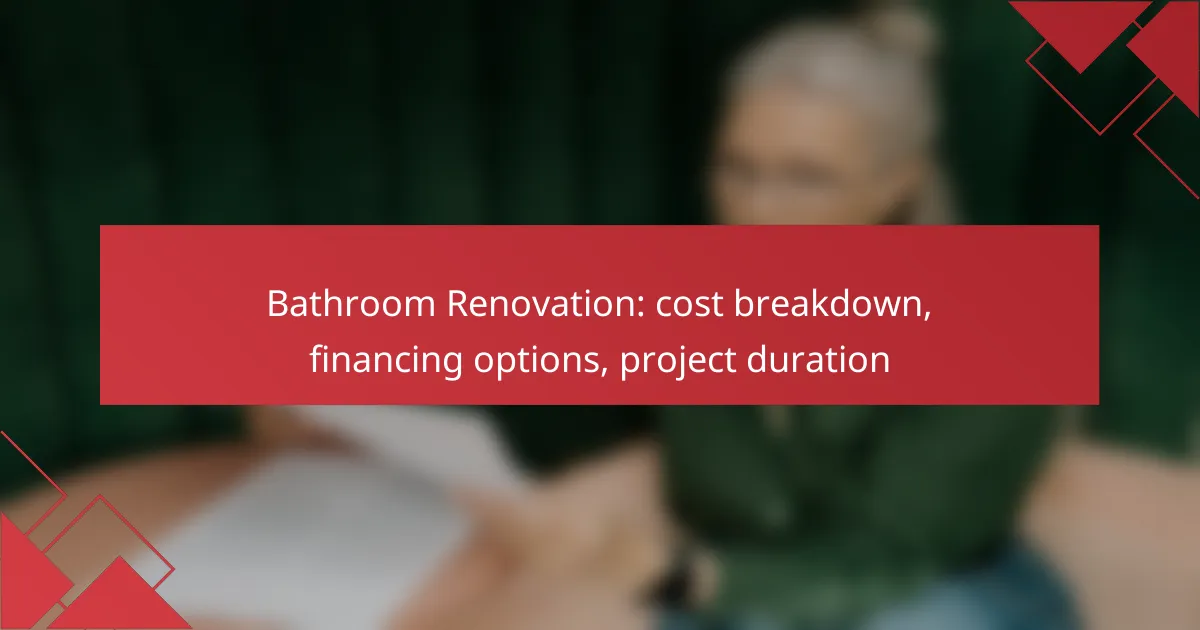Investing in energy efficiency upgrades can significantly reduce utility bills, with potential savings ranging from 10% to 30% annually. Average investments in the UK vary from a few hundred to several thousand pounds, depending on the type of upgrade, such as insulation or heating systems. Additionally, various rebate programs are available to assist homeowners and businesses in making these upgrades more affordable, further enhancing long-term savings and comfort.
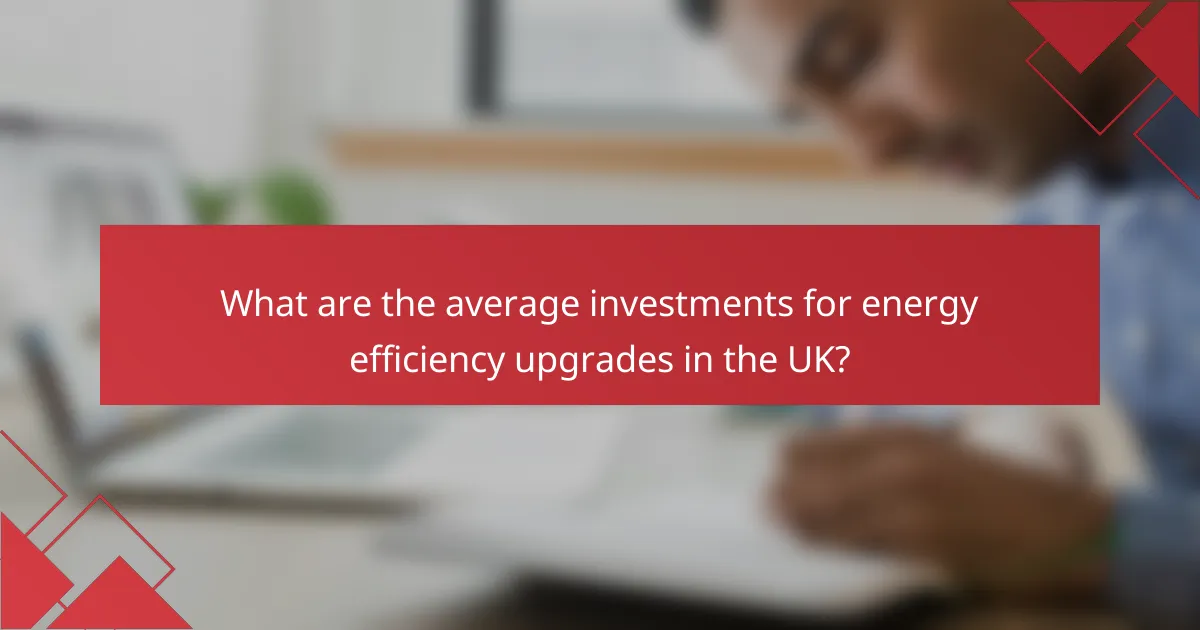
What are the average investments for energy efficiency upgrades in the UK?
The average investments for energy efficiency upgrades in the UK typically range from a few hundred to several thousand pounds, depending on the type of upgrade. Homeowners can expect to spend on insulation, windows, and heating systems, each contributing to long-term savings on energy bills.
Typical costs for insulation upgrades
Insulation upgrades can vary significantly in cost, generally ranging from £500 to £2,500. Factors influencing the price include the type of insulation material used and the area being insulated, such as lofts, walls, or floors.
Investing in insulation not only improves energy efficiency but also enhances comfort by maintaining consistent indoor temperatures. Homeowners should consider the potential for reduced heating costs when evaluating these upgrades.
Average expenses for energy-efficient windows
Replacing standard windows with energy-efficient alternatives typically costs between £3,000 and £10,000, depending on the number of windows and their size. Double or triple glazing options can significantly improve thermal performance.
Energy-efficient windows can lead to substantial savings on heating bills and may qualify for various government rebate programs, making them a worthwhile investment for many homeowners.
Investment ranges for heating system upgrades
Upgrading heating systems can cost anywhere from £2,000 to £5,000, depending on the type of system and installation requirements. Options include high-efficiency boilers, heat pumps, and smart thermostats.
When considering a heating system upgrade, homeowners should evaluate the long-term savings on energy bills and potential rebates available for energy-efficient systems. It’s essential to choose a system that aligns with the home’s energy needs and budget.
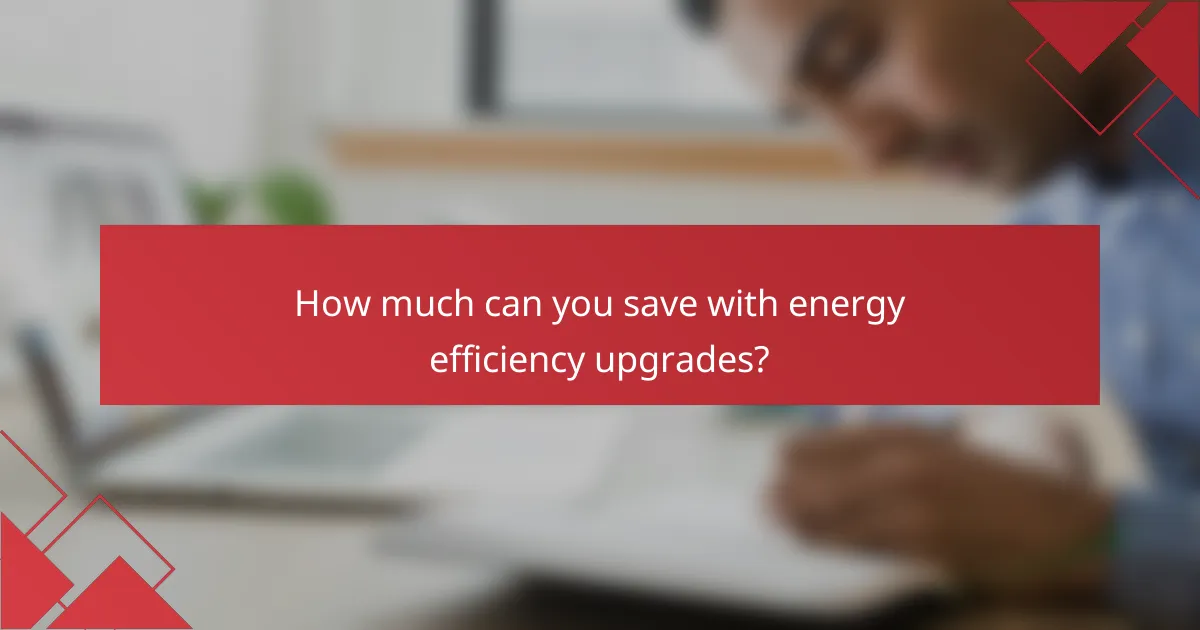
How much can you save with energy efficiency upgrades?
Investing in energy efficiency upgrades can lead to significant savings on utility bills, often ranging from 10% to 30% annually. These upgrades not only reduce energy consumption but also enhance the overall comfort of your home.
Long-term savings on energy bills
Energy efficiency upgrades can substantially lower your monthly energy bills. For example, replacing old appliances with ENERGY STAR-rated models can save households hundreds of dollars each year. Additionally, improving insulation and sealing leaks can further reduce heating and cooling costs, leading to cumulative savings over time.
Consider implementing smart thermostats and energy-efficient lighting, which can also contribute to lower energy expenses. These upgrades typically pay for themselves within a few years through the savings they generate.
Impact on property value
Energy efficiency upgrades can enhance your property’s market value. Homes with energy-efficient features often attract more buyers and can sell for higher prices compared to similar homes without these improvements. Buyers are increasingly looking for properties that promise lower utility costs and a reduced carbon footprint.
Investments in energy efficiency can yield a return of 70% to 80% or more on the initial investment when it comes time to sell. This makes energy upgrades not only a smart financial decision but also a way to appeal to environmentally conscious buyers.
Return on investment timelines
The return on investment (ROI) for energy efficiency upgrades varies based on the type of upgrade and local energy prices. Generally, homeowners can expect to see a payback period of 3 to 10 years for most upgrades, such as new windows or HVAC systems. Simple measures like LED lighting or programmable thermostats often provide quicker returns, sometimes within a year.
To maximize ROI, prioritize upgrades that offer the highest energy savings relative to their cost. Conducting an energy audit can help identify the most effective improvements for your specific situation, ensuring you make informed decisions that lead to the best financial outcomes.
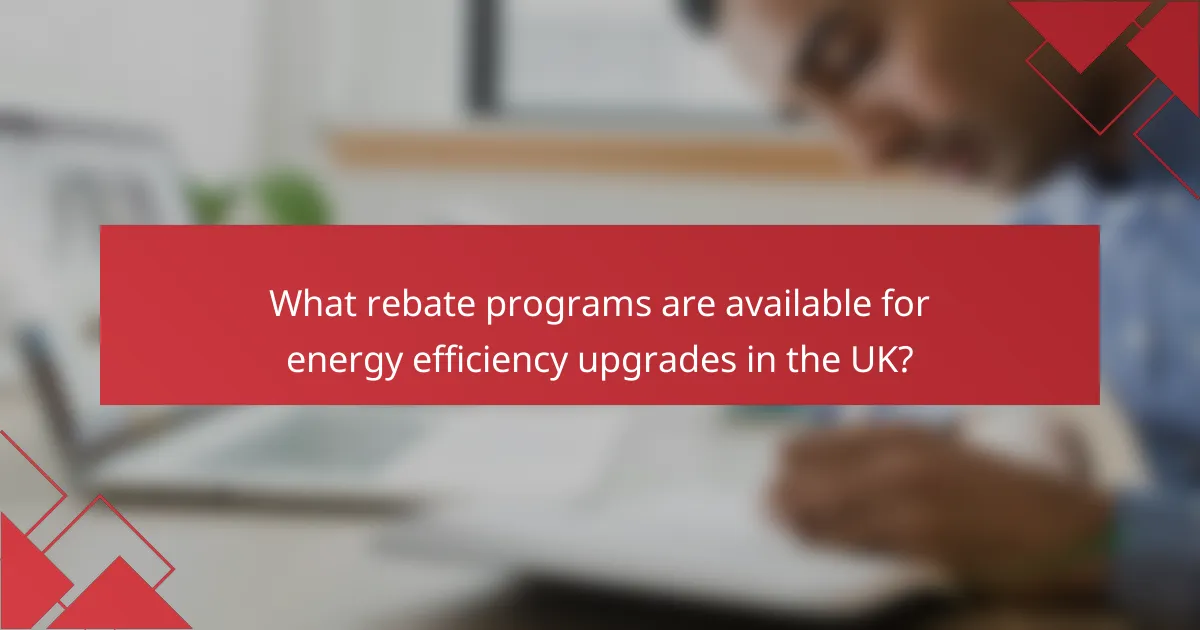
What rebate programs are available for energy efficiency upgrades in the UK?
In the UK, various rebate programs exist to support energy efficiency upgrades, helping homeowners and businesses reduce their energy costs. These programs often provide financial incentives, making it more affordable to invest in energy-saving technologies.
Government-backed schemes
Government-backed schemes, such as the Energy Company Obligation (ECO), offer funding for energy efficiency improvements. Under ECO, energy suppliers are required to help households reduce energy consumption, often covering the costs of insulation and heating upgrades for eligible homes.
Another significant program is the Green Homes Grant, which provides vouchers to cover part of the cost of energy-efficient home improvements. Homeowners can receive up to £5,000 or £10,000 depending on their circumstances, which can significantly lower the upfront investment needed for upgrades.
Local authority incentives
Local authorities in the UK may offer their own incentives for energy efficiency upgrades, including grants or low-interest loans. These programs vary by region, so it’s essential to check with your local council for specific offerings.
Some councils also run initiatives that provide free or subsidized energy assessments to identify potential upgrades. Engaging with these local programs can maximize your savings and ensure you are taking full advantage of available resources.
Energy company grants
Many energy companies provide grants or rebates for customers who undertake energy efficiency upgrades. These grants can cover a portion of the costs associated with installing energy-efficient appliances, insulation, or renewable energy systems.
To access these grants, customers typically need to meet certain eligibility criteria, such as being on a specific tariff or having a certain level of energy consumption. It’s advisable to contact your energy provider directly to inquire about available grants and the application process.
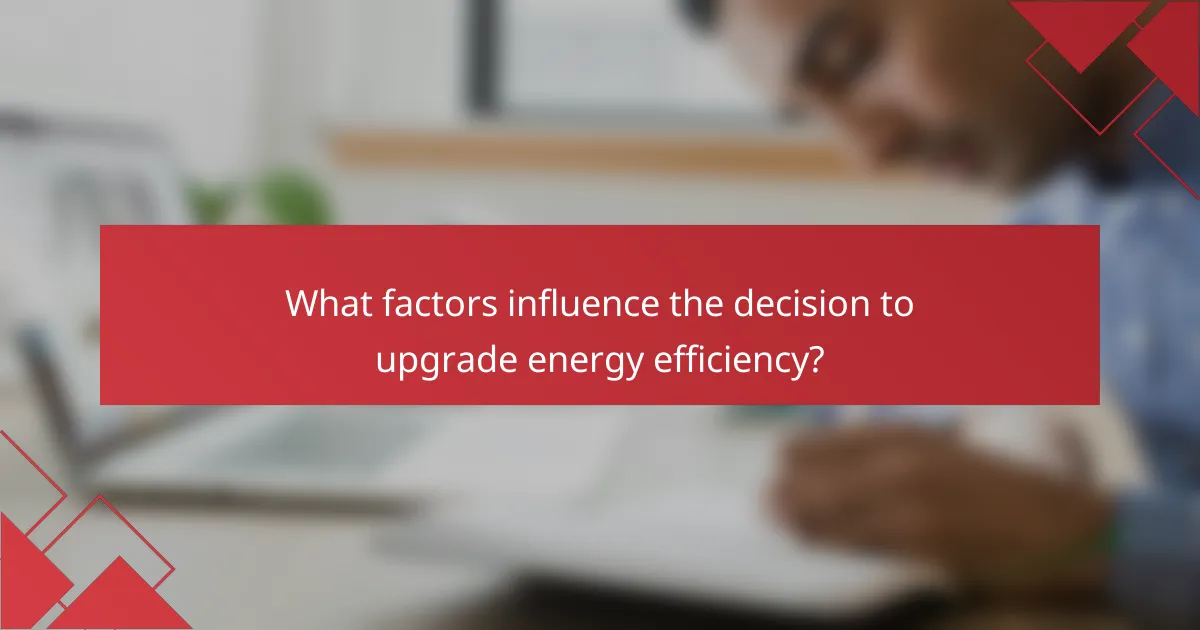
What factors influence the decision to upgrade energy efficiency?
Several key factors influence the decision to upgrade energy efficiency, including the age and condition of the home, local climate conditions, and available financing options. Understanding these elements helps homeowners make informed choices about potential upgrades and their long-term benefits.
Home age and condition
The age and condition of a home significantly impact energy efficiency upgrades. Older homes often have outdated insulation, windows, and HVAC systems, which can lead to higher energy costs. Upgrading these features can result in substantial energy savings, especially in homes built several decades ago.
Homeowners should assess the current state of their property. For example, if a home has single-pane windows or lacks proper insulation, it may be more beneficial to invest in energy-efficient replacements. Regular maintenance and timely upgrades can enhance overall energy performance.
Local climate considerations
Local climate plays a crucial role in determining the types of energy efficiency upgrades needed. In colder regions, improving insulation and installing energy-efficient heating systems can lead to significant savings on heating bills. Conversely, in warmer climates, focusing on cooling systems and shading can be more beneficial.
Homeowners should consider local weather patterns when planning upgrades. For instance, areas with high humidity may require dehumidifiers or energy-efficient air conditioning units, while those in arid regions might benefit from energy-efficient evaporative coolers.
Available financing options
Financing options can greatly influence the decision to upgrade energy efficiency. Many homeowners may not have the upfront capital for significant improvements, so exploring financing programs is essential. Options may include low-interest loans, energy efficiency grants, or rebates from local utility companies.
Homeowners should research available programs in their area. For example, some states offer tax credits or rebates for installing energy-efficient appliances or systems, which can reduce overall costs. Understanding these financial incentives can make energy upgrades more accessible and appealing.
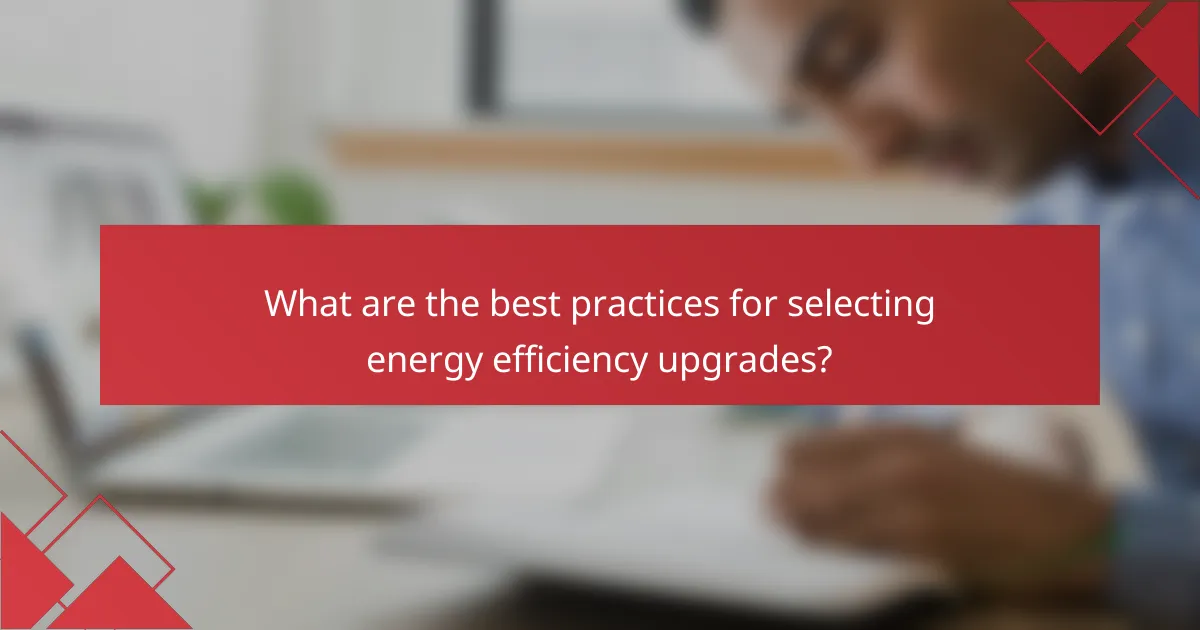
What are the best practices for selecting energy efficiency upgrades?
To select effective energy efficiency upgrades, start by assessing your current energy usage and identifying areas for improvement. Focus on upgrades that offer significant savings and align with your budget and long-term goals.
Evaluating energy audit results
Begin by conducting a comprehensive energy audit to pinpoint inefficiencies in your home or business. An audit will provide insights into energy consumption patterns and highlight specific areas where upgrades can yield the most savings.
Look for recommendations that prioritize high-impact changes, such as improving insulation, upgrading HVAC systems, or replacing old appliances. Understanding these results will guide your decision-making process and help you allocate your budget effectively.
Comparing contractor quotes
When seeking contractors for your energy efficiency upgrades, obtain multiple quotes to ensure competitive pricing. Compare not only the costs but also the scope of work, materials used, and warranties offered.
Consider checking references and reviews for each contractor to gauge their reliability and quality of work. This will help you make an informed choice and avoid potential pitfalls associated with subpar installations.
Prioritizing upgrades based on impact
Prioritize upgrades that provide the greatest return on investment. For instance, replacing old windows or upgrading insulation typically results in substantial energy savings over time, while also enhancing comfort.
Use a simple ranking system to evaluate potential upgrades based on factors like cost, expected savings, and payback period. Focus on projects that can be completed within your budget and offer long-term benefits, ensuring that your investments are both strategic and effective.
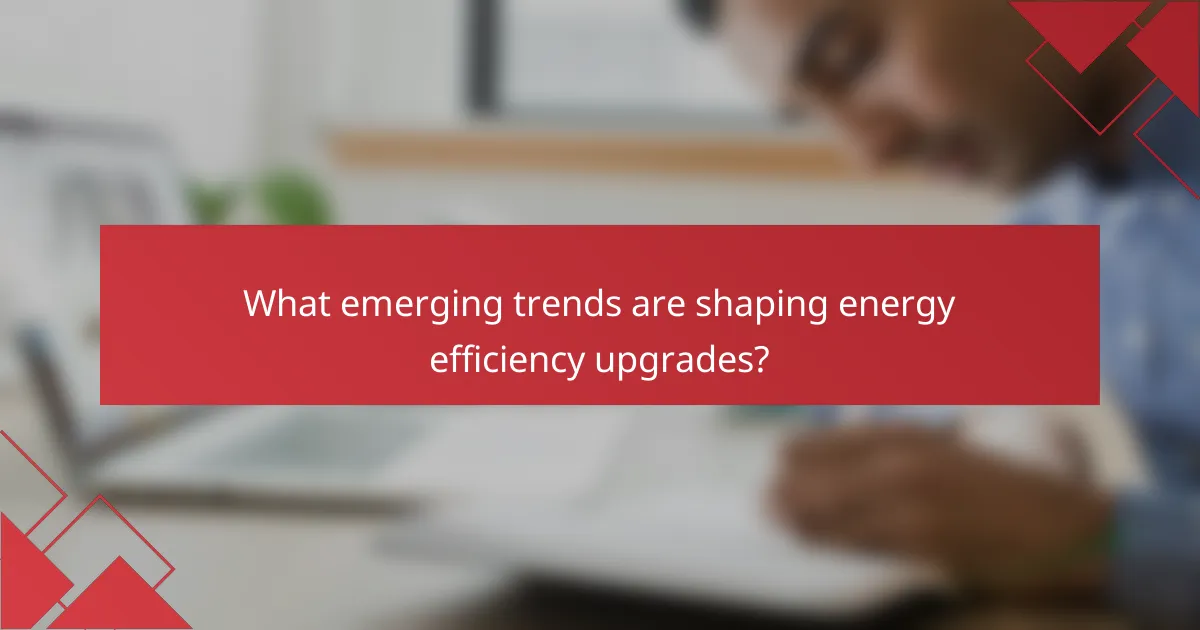
What emerging trends are shaping energy efficiency upgrades?
Energy efficiency upgrades are increasingly influenced by technological advancements, regulatory changes, and consumer awareness. These trends focus on enhancing performance while reducing costs and environmental impact.
Average investment for energy efficiency upgrades
The average investment for energy efficiency upgrades can vary widely depending on the type of upgrade and the size of the property. Homeowners might spend anywhere from a few hundred to several thousand USD on improvements like insulation, HVAC systems, or energy-efficient appliances.
For commercial properties, investments can range from thousands to millions of USD, particularly for extensive retrofitting projects. It’s essential to assess the potential return on investment (ROI) when considering these upgrades.
Long-term savings from energy efficiency upgrades
Long-term savings from energy efficiency upgrades can be significant, often resulting in reduced utility bills and increased property value. Homeowners may save 10-30% on energy costs annually, while businesses could see even higher savings depending on their energy consumption patterns.
Additionally, many upgrades can qualify for tax incentives or rebates, further enhancing financial benefits over time. Regular monitoring and maintenance can help ensure that these savings are maximized.
Rebate programs for energy efficiency upgrades
Rebate programs for energy efficiency upgrades are available at local, state, and federal levels, providing financial incentives to encourage investments in energy-saving technologies. These programs can cover a portion of the costs for qualifying upgrades, making them more affordable.
To take advantage of these rebates, homeowners and businesses should research available programs in their area, as eligibility and amounts can vary. Websites like the Database of State Incentives for Renewables & Efficiency (DSIRE) can be useful resources for finding relevant programs.
